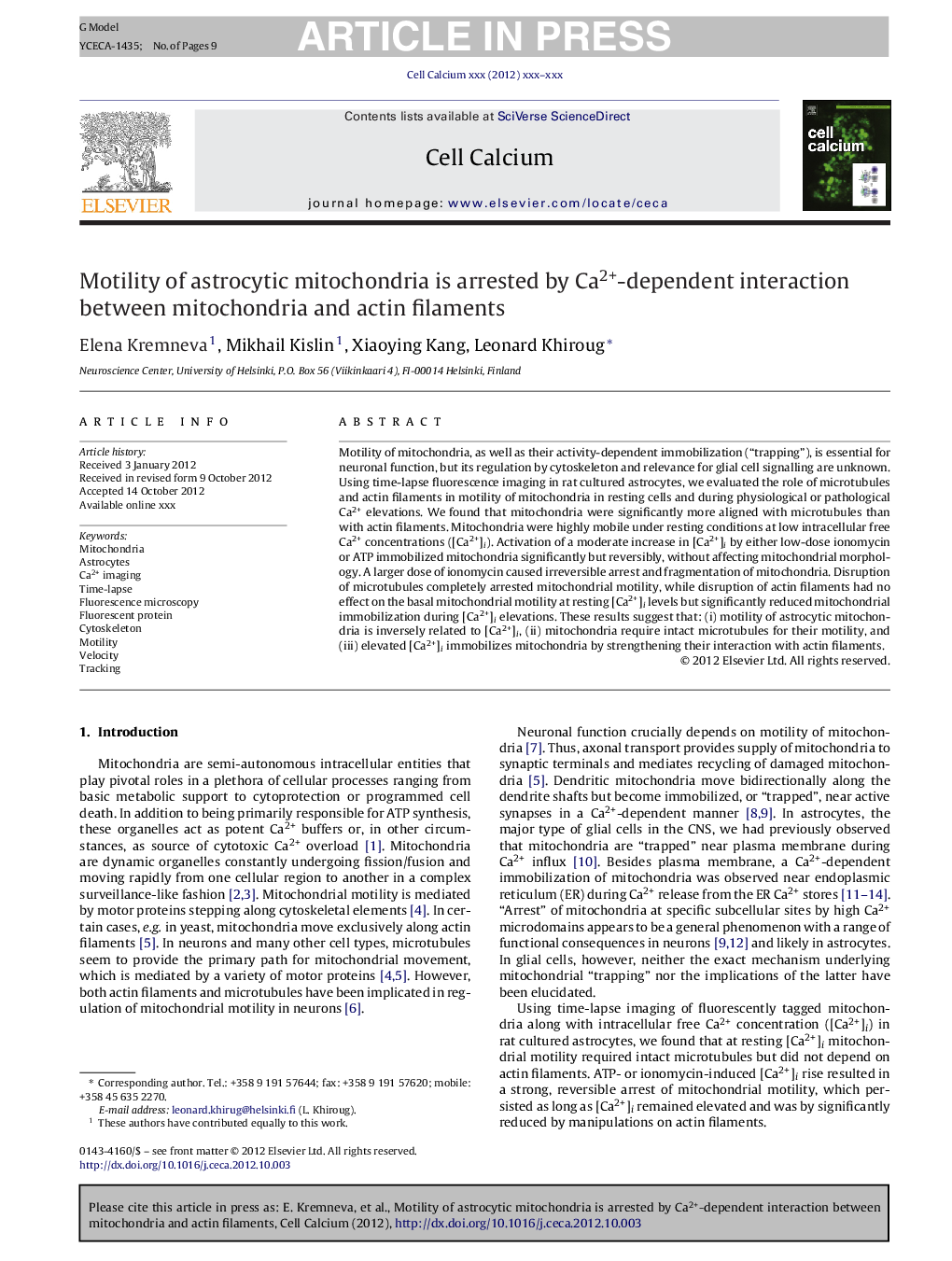| Article ID | Journal | Published Year | Pages | File Type |
|---|---|---|---|---|
| 10926288 | Cell Calcium | 2013 | 9 Pages |
Abstract
Motility of mitochondria, as well as their activity-dependent immobilization (“trapping”), is essential for neuronal function, but its regulation by cytoskeleton and relevance for glial cell signalling are unknown. Using time-lapse fluorescence imaging in rat cultured astrocytes, we evaluated the role of microtubules and actin filaments in motility of mitochondria in resting cells and during physiological or pathological Ca2+ elevations. We found that mitochondria were significantly more aligned with microtubules than with actin filaments. Mitochondria were highly mobile under resting conditions at low intracellular free Ca2+ concentrations ([Ca2+]i). Activation of a moderate increase in [Ca2+]i by either low-dose ionomycin or ATP immobilized mitochondria significantly but reversibly, without affecting mitochondrial morphology. A larger dose of ionomycin caused irreversible arrest and fragmentation of mitochondria. Disruption of microtubules completely arrested mitochondrial motility, while disruption of actin filaments had no effect on the basal mitochondrial motility at resting [Ca2+]i levels but significantly reduced mitochondrial immobilization during [Ca2+]i elevations. These results suggest that: (i) motility of astrocytic mitochondria is inversely related to [Ca2+]i, (ii) mitochondria require intact microtubules for their motility, and (iii) elevated [Ca2+]i immobilizes mitochondria by strengthening their interaction with actin filaments.
Keywords
Related Topics
Life Sciences
Biochemistry, Genetics and Molecular Biology
Cell Biology
Authors
Elena Kremneva, Mikhail Kislin, Xiaoying Kang, Leonard Khiroug,
